Transform Your Murky Pool into a Crystal-Clear Oasis in 48 Hours
December 31th, 2024
December 31th, 2024
The sun's blazing heat calls for a refreshing dip, but your pool looks more like a murky swamp than a crystal-clear oasis. It's a scenario every pool owner dreads—cloudy water that seems to defy all efforts at clarity. Whether it's due to an imbalance of chemicals or an influx of tiny particles, this problem can quickly turn from a minor annoyance into a full-blown headache. But fear not, achieving sparkling water in just two days is entirely possible with the right approach.
Years ago, I faced the same dilemma. My children eagerly awaited a pool party, but our backyard lagoon was anything but inviting. Desperation led me to research and experiment with various solutions. What I discovered was a straightforward yet effective strategy that transformed our murky waters into a shimmering paradise overnight.
Starting with precise chemical balancing and regular filtration, the process might seem daunting initially, but breaking it down into manageable steps makes it surprisingly simple. Imagine adding a pinch of baking soda here, a dash of algaecide there, and watching the magic unfold. With a bit of patience, some elbow grease, and basic pool supplies, you too can reclaim your backyard haven faster than you'd think.
In the following guide, you'll find practical tips, tried-and-true methods, and a step-by-step action plan designed to restore your pool's clarity in under 48 hours. Say goodbye to cloudy water and hello to a sparkling blue retreat.
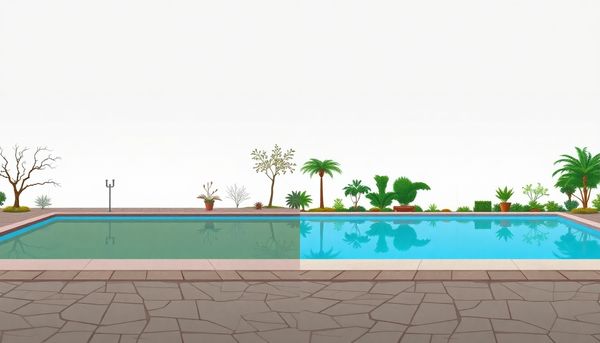
Encountering issues with your pool's filtration system can feel like chasing shadows on a sunny day. It's frustrating when the water remains murky despite your best efforts. The filter is the heart of your pool's circulation system, and if it's not functioning correctly, your pool's cleanliness will suffer. A friend of mine once likened his faulty filter to a lazy housekeeper—nothing was getting cleaned, and everything looked slightly off.
First, ensure that your filter is running for the recommended amount of time each day. A common oversight is not giving the filter enough hours to process the pool's entire volume of water. If the recommended 8-12 hours daily is being met, yet the water remains cloudy, the issue might lie in the filter media itself. Cartridge filters need regular cleaning or replacement, sand filters require backwashing, and D.E. filters benefit from a thorough rinse and re-coating with diatomaceous earth.
Moreover, examine the filter settings. Sometimes, a simple adjustment can enhance efficiency. For instance, switching a multiport valve to "recirculate" can help bypass filtration issues temporarily while you work on other aspects of pool maintenance. Lastly, always keep an eye out for leaks or blockages in the system. Even a small obstruction can drastically reduce the filter’s effectiveness. Addressing these potential hiccups with diligence can transform your pool from a cloudy haze to a crystal-clear oasis in no time.
When it comes to ensuring your pool remains crystal clear, optimizing filtration performance stands as a crucial step. I remember the first time my pool started resembling a murky pond; it was clear something was off with the filtration. The heart of any pool's clarity, the filter system works tirelessly to trap the minuscule particles that cloud the water. Without it functioning at its peak, even the cleanest pools can turn hazy.
Begin by assessing the filter type and its maintenance needs—be it sand, cartridge, or diatomaceous earth (D.E.). Each has distinct cleaning and replacement schedules. For instance, my cartridge filter demands regular rinsing under high-pressure water to maintain efficiency. Check the pressure gauge as a low reading might indicate a clogged filter, whereas a high reading suggests it's time for cleaning or backwashing.
Moreover, ensure the pump runs long enough to cycle all the water through the filter, typically at least 8-12 hours a day. This was a game-changer for me; once I adjusted the run time, the improvement was noticeable. Regularly inspect and clean skimmer baskets and pump traps to prevent obstructions that could hinder water flow.
By giving your filtration system the attention it deserves, you're setting the stage for a pool that's not just free from cloudiness but is a sparkling oasis ready for any occasion.
When confronting a pool that resembles a foggy morning landscape, balancing your water chemistry is like finding the right recipe for clarity. Each ingredient plays a crucial role. It's akin to baking: too much of one ingredient can spoil the batch. Here, the elements of pH, total alkalinity, and calcium hardness are your flour, sugar, and eggs. Together, they create that perfect blend ensuring your pool not only sparkles but also stays healthy.
To start, grab a trusty test kit—one that's reliable and accurate. Test strips are quick but often miss the details, much like speed dating for pool chemistry. Liquid kits, though requiring a bit more attention, reveal the nuances. Dive into the results. If your pH resembles a rollercoaster, make adjustments with a pH increaser or decreaser. Too high or too low, and your water invites instability, leading to scaling or corrosion.
Total alkalinity follows, acting as a buffer for your pH levels. Aim for the sweet spot between 80 and 120 ppm. Lastly, keep an eye on calcium hardness. Excessive levels can create unsightly scaling, while too little might corrode your equipment.
Balancing these elements is not merely an exercise in chemistry but one in patience and precision. Keep everything in harmony, and your pool will thank you with clarity, allowing you to enjoy a dip without peering through a haze.
Battling the relentless green creep and floating debris in your pool is akin to engaging in a tactical skirmish. Algae and debris are notorious for turning a refreshing oasis into a murky mess, often requiring more than just a surface-level sweep. Let's journey into the heart of pool maintenance, where maintaining clarity becomes an art.
When it comes to algae, a swift response is crucial. Early-stage algae often appear as a slippery film on pool surfaces. A simple test with your fingers along the waterline can confirm its presence. Once you detect this unwelcome guest, it’s time for a rigorous scrub with a stiff pool brush and a chlorine shock treatment. This process not only kills the algae but prevents their quick return. Remember, shocking the pool at dusk maximizes chlorine's potency since sunlight diminishes its effectiveness.
Debris, on the other hand, is a constant companion, especially during windy seasons or after storms. Leaves, twigs, and pollen can overload your skimmer, so consider using a leaf net for quick clean-ups. A manual vacuum is your best friend here, particularly when fine particles evade the skimmer's reach. As someone who learned the hard way, failing to routinely clear debris leads to clogged filters and frustrated weekends.
Ultimately, maintaining a clean pool requires consistent monitoring and action. By incorporating these practices into your routine, you not only conquer algae and debris but also ensure that your pool remains a crystal-clear refuge all summer long.
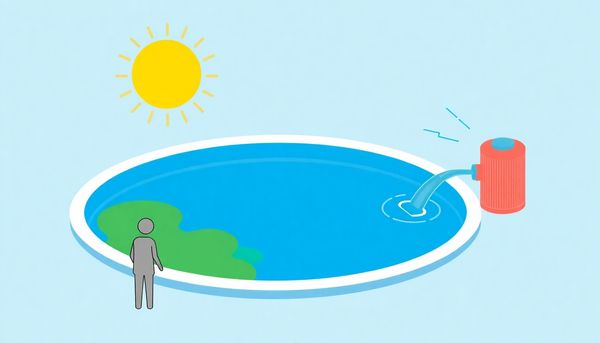
Chemistry in pool maintenance might seem like a daunting subject, but achieving balance is crucial for crystal-clear water. A fellow pool owner once shared their frustration of relentless cloudiness, only to discover that imbalanced water chemistry was the sneaky culprit. The components of your pool's water chemistry—pH, Total Alkalinity, and Calcium Hardness—act like a delicate triad, each influencing the effectiveness of chlorine and the clarity of your water.
When pH levels drift too high, chlorine loses its potency, leaving room for bacteria and particles to cloud your pool. On the flip side, if pH is too low, corrosive water can damage pool equipment. Maintaining a pH between 7.2 and 7.6 is key. Total Alkalinity should range from 80 to 120 ppm, acting as a buffer that keeps pH stable. High Calcium Hardness, often above 400 ppm, leads to scaling, while too low can cause erosion. Aim for a range of 200 to 400 ppm.
Regular testing—using liquid test kits for accuracy—is essential. Adjustments can be made with pH increasers or decreasers, and baking soda can help tweak alkalinity. Calcium levels can be balanced with specific hardness increasers. By understanding and maintaining these levels, your pool water will not only clear up but remain invitingly sparkly for future swims. This attention to detail is what turns pool maintenance from a chore into a science, ensuring you enjoy every splash.
There's an art to attaining that pristine, crystal-clear pool, and much of it hinges on optimizing filtration efficiency. When I first faced the challenge of murky waters, I was surprised to learn how crucial the filtration system truly is. Filters act as the pool’s kidneys, removing impurities that cloud the water. To truly capitalize on your filter's potential, a little extra attention goes a long way.
Start by regularly cleaning and backwashing your filter. Whether you have a sand, cartridge, or diatomaceous earth (D.E.) filter, maintenance is key. For sand filters, backwashing should be routine, while cartridge filters need thorough rinsing, and D.E. filters demand careful handling when replacing the powder. I recall the first time I missed a backwash—it wasn’t long before my sparkling oasis turned into a murky swamp!
Next, consider the filter's runtime. Running it for at least 8-12 hours daily, especially after heavy use or storms, will make a noticeable difference. My neighbor swears by setting a timer to ensure consistency. Additionally, ensure that the pump and skimmer are free from blockages. A simple inspection can reveal leaves or debris obstructing optimal flow—something I learned the hard way after a windy afternoon filled my pool with fallen foliage.
Ultimately, by fine-tuning your filtration system's performance, you not only restore your pool's clarity but also extend the life of your equipment. It’s a rewarding effort that pays off with every shimmering swim.
Ensuring that your pool maintains the right chlorine levels is akin to crafting the perfect cup of coffee. Too little, and it’s weak and ineffective; too much, and it becomes overwhelming and possibly harmful. When chlorine levels dip, your pool becomes a breeding ground for bacteria and algae, leading to that dreaded cloudy appearance. My neighbor learned this the hard way after a weekend away. Upon return, their backyard oasis resembled a pond more than a pool.
Testing the chlorine levels regularly is crucial. Use a reliable test kit to check both free and combined chlorine levels. Free chlorine is your active sanitizer, while combined chlorine is the used-up portion that should be minimal. If you find your chlorine is low, it's time to act. Shocking the pool with a high dose of chlorine will help eradicate chloramines and other contaminants lurking in the water.
It’s also wise to consider the impact of UV rays from the sun, which deplete chlorine. Adding cyanuric acid helps stabilize chlorine, particularly in sun-exposed pools. Think of it as sunscreen for your sanitizer.
Finally, remember that maintaining balance is key. Just like how you wouldn’t use too much milk in your coffee, you don’t want to overdo it with chlorine. Regularly monitor your pool's chemical balance to keep the water clear, inviting, and ready for the next swim.
Balancing the pH and alkalinity of your pool is akin to orchestrating a delicate symphony—each element must harmonize to ensure clear, inviting water. I remember a time when my own pool turned into an unappealing milky hue, simply because I overlooked these crucial parameters. To prevent such an eyesore, understanding the science behind pH and alkalinity becomes vital.
Let's talk numbers: the ideal pH level for pool water should linger between 7.2 and 7.8. This range ensures that chlorine remains effective while keeping swimmers comfortable. On the other hand, total alkalinity acts as a buffer, preventing sudden pH fluctuations. Aim to maintain it between 80 to 120 parts per million (ppm). This balance helps avert corrosion and scaling, which can otherwise wreak havoc on pool surfaces and equipment.
Using a reliable test kit, check these levels regularly. If you find the pH creeping too high, a pH decreaser (or acid) will bring it back in line. Conversely, a pH increaser might be necessary if levels dip too low. For alkalinity, bicarbonate-based products work wonders to elevate it, while a good dose of acid lowers it if needed.
Getting these basics right can transform murky waters into a sparkling oasis. It’s a lesson I learned the hard way, but one that guarantees a cloud-free swim, keeping pool days blissful and uninterrupted.
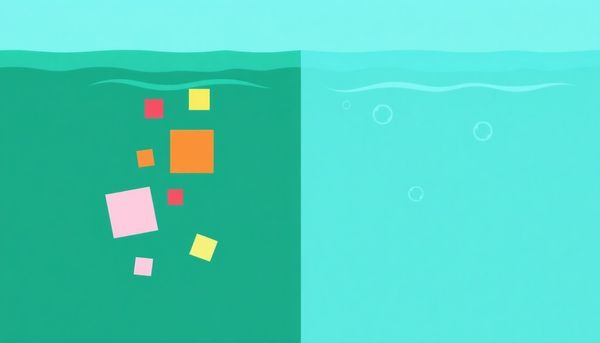
When faced with cloudy pool water, a powerful ally in restoring clarity is the method of shocking. Picture this: it’s not just a routine chemical addition; it’s an intense burst of chlorine designed to eradicate stubborn contaminants and pesky chloramines. I recall the first time I shocked my pool—a daunting task, yet incredibly satisfying as the clarity slowly returned.
Begin by choosing a high-quality shock product—calcium hypochlorite is a popular choice—and add it to your pool during the calm of dusk. Darkness plays a crucial role here; sunlight can diminish chlorine’s effectiveness, so nighttime is the perfect setting for this process. Calculate the correct dosage based on your pool size, aiming for a chlorine level that doubles or even triples your current reading, especially if algae is involved.
Once the shock is in, it’s time for patience. Allow the filter to run continuously, ideally overnight, giving the chlorine ample opportunity to work its magic. The transformation isn’t purely chemical, though. A robust filtration system is your partner, tirelessly circulating water and capturing loosened debris. It’s worth investing time in checking your filter’s health; a clean, well-maintained filter ensures the shock treatment is more effective.
After a long night’s work, test the water again. A good balance should show improved clarity, but if stubborn cloudiness remains, consider a secondary shock. Keep in mind, each pool is unique, and sometimes an extra boost is required to achieve that crystal-clear finish.
When it comes to pool maintenance, filtration is your first line of defense against murky water. A filter needs to be in peak condition to efficiently capture those tiny particles causing cloudiness. I remember the first summer we battled cloudy water; it was a frustrating cycle until we realized that our filter was clogged with debris. Regular cleaning of your filter is crucial—remove and rinse cartridges, backwash sand filters, or refresh DE (diatomaceous earth) grids as needed.
Another key aspect is ensuring your pool's circulation system is optimized. You want the water to flow smoothly, which means running your pump for at least eight hours daily. This keeps the water moving and gives your filter the best chance to catch contaminants. I learned the hard way that reducing pump run times to save on electricity can lead to stagnation and cloudiness.
Don't overlook the importance of checking the filter pressure gauge regularly. If you notice a spike, it's a sign that the filter is under strain and needs attention. Maintenance might seem tedious, but it's essential for preventing issues before they start. In our experience, staying on top of these small tasks keeps the water clear and inviting, making pool time a pleasure rather than a chore.
A pool isn’t just a backyard attraction; it’s a sanctuary for relaxation and fun. When cloudy water appears, the culprit is often poor water chemistry. Ensuring your pool's chemical balance isn't just about aesthetics; it's vital for health and safety. Achieving this balance demands attention to three key factors: pH, total alkalinity, and calcium hardness.
Testing is the first step. A reliable liquid test kit or even a quick check with test strips can reveal imbalances. Once you’ve identified the need for adjustment, start with the pH level. Ideally, it should range between 7.2 and 7.6. If it strays beyond this, irritations and inefficiencies arise—both in swimmer comfort and chlorine effectiveness.
Next, focus on total alkalinity. This should sit comfortably between 80 and 120 parts per million (ppm). Proper alkalinity acts as a buffer for pH fluctuations, a secret weapon in maintaining stability. Lastly, don't ignore calcium hardness. While it sounds like something out of a chemistry lab, in practice, you’re aiming to avoid scale formation or water that feels too soft. Maintain levels between 200 and 400 ppm.
Picture last summer when I neglected these elements and ended up with a milky, uninviting pool. A thorough rebalancing brought clarity back in less than 48 hours. By respecting the chemistry, not only will your pool be clear, but it will sparkle, inviting everyone in for a swim.
Ever found yourself gazing into your backyard oasis only to be met with a murky, uninviting pool? You're not alone. Many pool owners face the challenge of cloudy water, especially after a heavy storm or a bustling weekend of pool parties. Before resigning yourself to endless skimming and chemical adjustments, there's a simple ally to consider: the pool clarifier.
Pool clarifiers work by consolidating smaller particles into larger clumps that your filter can more easily capture. This process feels like a lifesaver when you notice the water's clarity improving, almost as if by magic. Using a clarifier is straightforward: simply follow the manufacturer's instructions regarding dosage, pour it in, and let your filtration system do the rest. It's a gentle yet effective way to address mild cloudiness without the labor-intensive task of vacuuming your pool repeatedly.
The secret lies in patience and persistence. While a clarifier won't offer instant results—the process might take a few days—it provides a hassle-free solution if your pool’s cloudiness isn't severe. Remember, filters work best when they are clean, so ensure yours is well-maintained to maximize the clarifier's effectiveness. By integrating clarifiers into your pool care routine, you're one step closer to transforming that cloudy view into a sparkling blue retreat.
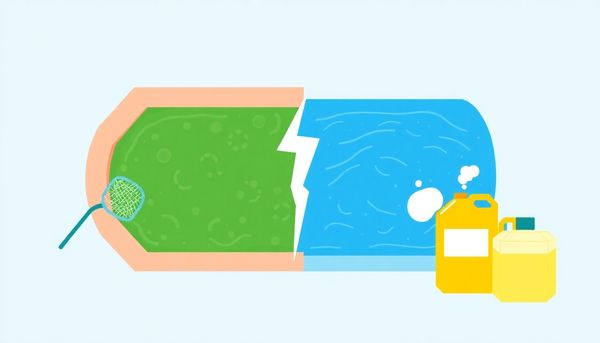
Ever stood at the edge of your pool, staring into a murky abyss, and wished for a magic solution? In situations where time is of the essence, a pool clarifier might just be your best ally. Unlike a flocculant, which gathers debris in hefty clumps that require manual removal, a clarifier simplifies clean-up by aggregating tiny particles into larger clusters that your filter can handle efficiently.
While clarity doesn't come instantly, it does arrive swiftly and with minimal effort on your part. Begin by testing and balancing your pool's chemistry—ensure the pH, alkalinity, and chlorine levels are within recommended ranges. This sets the stage for the clarifier to work its magic. Once your water is chemically prepared, add the clarifier according to the manufacturer’s guidelines. This isn't a case where "more is better"; overuse can actually backfire, causing more cloudiness.
The clarifier acts like a magnet for those pesky particles, drawing them together so your filter can easily trap and remove them. Run your filtration system continuously for the next 24 to 48 hours. If your pool is equipped with a high-power filter such as a D.E. filter, you might witness results sooner rather than later. Regularly backwash your filter during this process to prevent clogs and maintain optimal performance.
In my own experience, using a clarifier transformed my pool from a cloudy quandary into a sparkling oasis in less than two days. It’s not just about quick results, though; a clarifier is a strategic tool to keep in your pool care arsenal, ensuring those impromptu pool parties never meet cloudy skies again.
Having a crystal-clear pool can feel like a luxury, especially when filtration problems disrupt your oasis. It’s like making a perfect cup of coffee and then finding out your grinder doesn’t work. The filtration system is your pool’s backbone, responsible for capturing tiny particles that cloud your water. When it falters, so does the clarity of your pool.
First, let's roll up our sleeves and inspect the filter. Check if your filter is clogged or if the sand, cartridges, or D.E. (diatomaceous earth) need replacing. Filters, much like car engines, require regular maintenance to function optimally. A good friend of mine once discovered a family of frogs living in his filter, and needless to say, his pool suffered for it! Clean the filter according to the manufacturer’s instructions, and remember to backwash if you have a sand or D.E. system.
Next, examine the pump’s behavior. Is it running for 8-12 hours a day, especially during the busy swimming season? If not, adjust the run times to ensure adequate water circulation. I once thought my pump was broken, only to realize the timer switch was accidentally set to a shorter cycle!
Finally, look for leaks or air bubbles in the system. Leaks can reduce the pressure and effectiveness of your filtration. Ensure all connections are snug and the pump basket lid is sealed tightly. With these steps, you’ll be on your way to restoring your pool’s sparkling allure in no time.
Chasing that perfectly clear water? Let’s talk chlorine. As the unsung hero of your pool, chlorine doesn’t just keep things clean—it battles pesky pathogens and bacteria that love to make your pool their home. When the water starts to cloud, one of the usual suspects is low chlorine. This can happen when leaves, twigs, and other debris find their way into your pool, or when a sunny day encourages people to jump in with sunscreen slathered on, adding to the pool's burden.
Start by testing your water’s chlorine levels. It's like checking the oil in your car—essential routine maintenance. Grab a reliable test kit, which will help you measure both free chlorine (what's actively sanitizing your pool) and combined chlorine (what’s been used up fighting contaminants). If the numbers are lower than recommended, it’s time for a chlorine shock.
Shocking sounds intense, but it’s a simple process. You’re just giving your pool a concentrated boost of chlorine to eliminate contaminants in one swift move. A pro tip: do this after sunset. The sun can degrade chlorine, making your efforts less effective. Afterward, let your filter run overnight to clear out what the shock kills.
Remember, balance is key. If your chlorine levels are right, you’re halfway to that dreamy, crystal-clear pool. Consistent maintenance will keep your pool ready for a splash at any moment, preventing those last-minute scrambles before a weekend barbecue.
Battling cloudy pool water can feel like trying to clear a foggy morning. While poor filtration, low chlorine, and improper water chemistry often bear the blame, the real culprits lurking are the tiny, sneaky contaminants—debris, pollen, and algae spores. The trick lies in outsmarting these microscopic foes.
Start by skimming the surface with a sturdy net, tackling those floating leaves and bugs that are more than just an eyesore. Once the big guys are out, it’s time to go deep. Equip yourself with a manual vacuum to hunt down the smaller particles lounging at the pool's bottom. It’s akin to sweeping dust bunnies from under the couch—out of sight but never out of mind.
Next, employ the magic of pool chemistry. Shocking your pool with a high dose of chlorine obliterates stubborn contaminants and chloramines. This might seem drastic, but think of it as a detox for your pool. Let it soak overnight, allowing the chlorine to work its charm under the cloak of darkness, away from the sun’s harsh rays.
Now, for the precision work—a pool clarifier acts like a magnet, drawing those elusive particles together into clusters your filter can capture. Add it while your filter hums away, and watch as your pool transforms from cloudy swamp to crystal lagoon. Remember, maintaining balance and keeping the filter running efficiently are key to avoiding a repeat performance. With a little patience and diligence, your pool will be clear and inviting in no time.

Tackling cloudy pool water with a pool flocculant is like wielding a magic wand for those stubborn, murky waters. When the usual clarifiers aren't cutting it, flocculants step in as the heavy hitters. My neighbor once remarked about how quick and effective flocculants are, yet they require a bit more elbow grease—and he was right. The basic idea is simple but powerful: flocculants clump the tiny particles causing the cloudiness into larger, heavier lumps that sink straight to the bottom of the pool.
Begin the process by thoroughly testing and adjusting your pool's pH levels. This ensures the flocculant works efficiently. After adding the correct amount of flocculant (check the manufacturer's guidelines for your pool size), run your filter system on the "recirculate" setting for about two hours. This circulates the flocculant without passing it through your filter media. Once done, turn the filter off and let the pool rest for 8-12 hours, allowing the particles to settle at the bottom.
The next morning, you’ll find a dense cloud of debris settled at the pool’s floor. This is where the hard work starts. Use a manual vacuum—set your filter to "waste" if you have a multiport valve—to carefully remove the debris. It's crucial to move the vacuum slowly; otherwise, you risk stirring up the particles again. Be prepared to refill and rebalance your pool water after this process, as a significant amount of water will be expelled. With patience and precision, your pool will soon be as clear as a mountain spring, ready for those sunny afternoon swims.
Unearthing the causes of cloudy pool water can feel like detective work, but understanding these culprits is crucial for a crystal-clear oasis. One summer, I recall battling murky water, only to discover my pool filter was the main saboteur. Filters are the unsung heroes of pool maintenance, capturing debris and ensuring water clarity. When they're clogged or malfunctioning, they can't effectively filter out the tiny particles that cloud water. Regular maintenance and occasional professional check-ups can keep them in top shape.
Chlorine, the stalwart defender against pathogens, also plays a pivotal role. Low levels can result from an influx of organic matter—think leaves or sweat—from an enthusiastic weekend pool party. Testing chlorine levels regularly and adjusting them accordingly prevents these sneaky pathogens from taking over. I learned the hard way after a family barbecue left the pool looking more like a pond.
Water chemistry, often the silent disruptor, involves balancing pH, total alkalinity, and calcium hardness. Neglecting these aspects invites scale formation and diminishes chlorine's efficacy. A simple test kit can save you headaches down the line.
Lastly, natural contaminants such as pollen or early-stage algae growth can stealthily turn your pool into a hazy mess. Seasonal changes often exacerbate this, as I experienced one particularly pollen-heavy spring. Prompt removal of debris and algae treatment are essential to maintaining clarity. By pinpointing these issues and tackling them head-on, your pool can return to being the sparkling centerpiece of your backyard.
Maintaining a crystal-clear pool often feels like chasing a mirage, but with effective pool maintenance strategies, clarity is within reach. Picture yourself sipping a cold drink by the poolside, knowing the water is just as clear as your favorite vacation spot. Achieving this requires a careful blend of regular maintenance practices, which, when consistently applied, transform a murky pool into a pristine oasis.
The first step is to ensure your filtration system is in peak condition. Filters are the unsung heroes of pool maintenance, tirelessly working to capture invisible particles that cloud the water. Regularly inspect and clean your filters, whether they're sand, cartridge, or diatomaceous earth (D.E.), to prevent clogs and ensure efficiency. I've learned the hard way that neglecting this can lead to frustratingly opaque water, even after a thorough cleaning.
Balancing water chemistry is equally crucial. A simple test kit can be your best friend in this endeavor. By routinely checking and adjusting chemical levels, you prevent the formation of scale and keep chlorine functioning optimally. My own pool maintenance routine involves a weekly check of pH, alkalinity, and calcium hardness. This proactive approach saves me from unexpected cloudy episodes, especially after a rainstorm or a busy weekend of splashing kids.
Lastly, keep an eye on the little things that often go overlooked. A brisk sweep with a skimmer can remove surface debris before it descends to cloud your pool, while regular brushing and vacuuming prevent algae from gaining a foothold. By adopting these routine maintenance habits, you'll not only clear up cloudy water but also enjoy the peace of mind that comes with a consistently inviting pool.
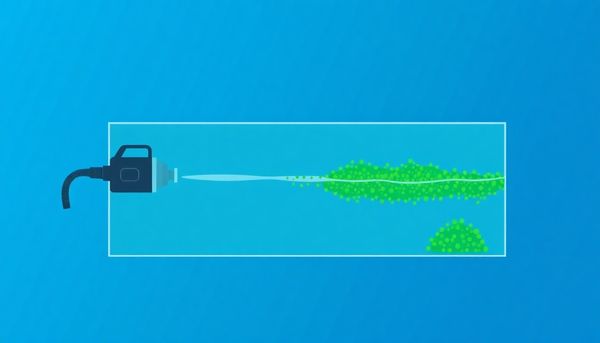
This article provided insights into maintaining your pool. Start your pool care journey today!
Want to become a pool maintenance expert? Our free Pool School course covers everything you need to know about pool care. From basic maintenance to advanced troubleshooting, you'll learn how to:
Join over 10,000 pool owners who have already transformed their pool care routine. Get started with our free Pool School course today!